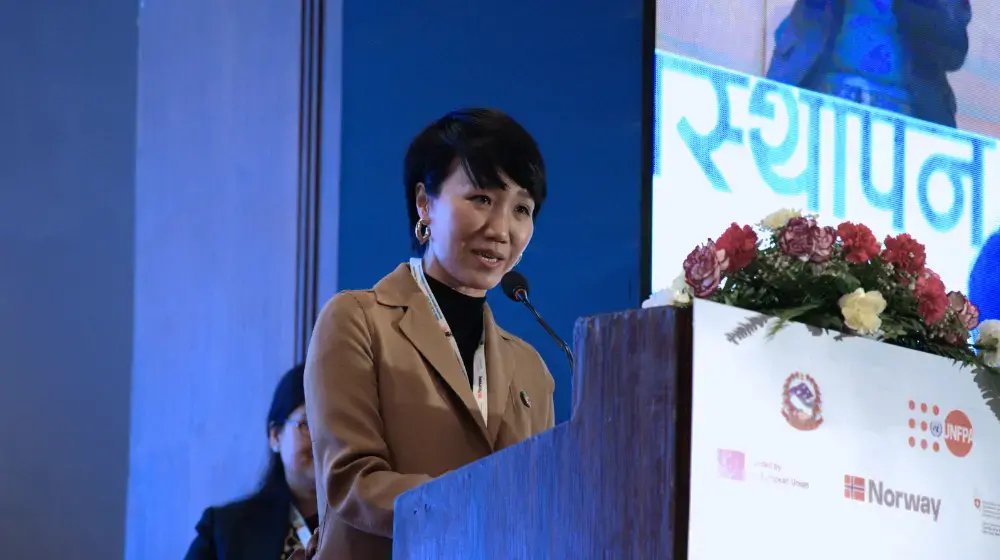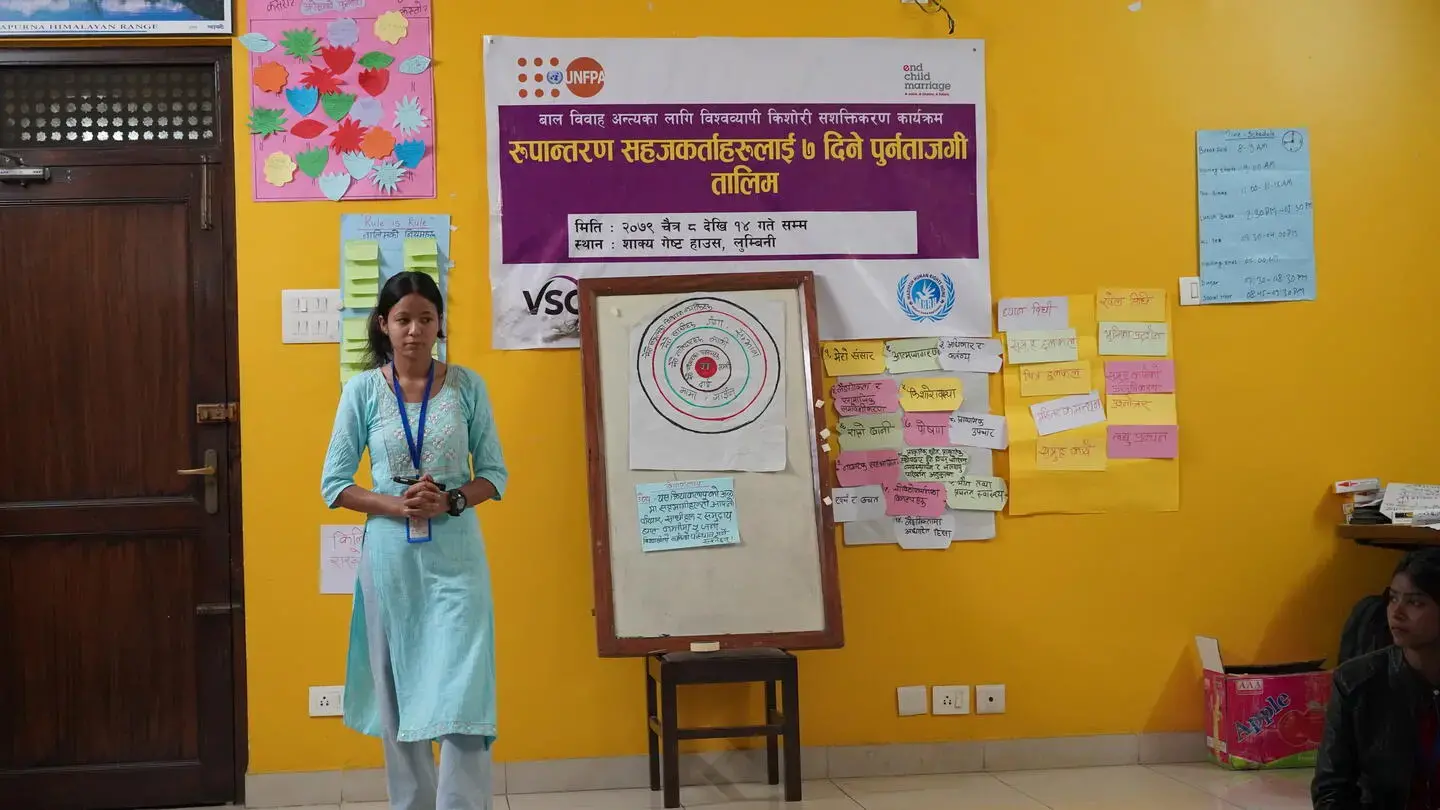TAULIHAWA, Kapilvastu – "I often watch boys playing cricket on this ground. But today I caught a glimpse of girl cricketers in action. I thoroughly enjoyed their match", says Irfan Darji, who watched the final match between two girls’ teams at the district headquarters of Kapilvastu, Tulihawa, on 26 November.
The 13-year-old had seen girls jumping ropes and playing football. “This was the first time I watched girls’ cricket,” he says cheering for the Fewa team, one of the finalists. He was also listening to a ball-by-ball commentary from a famous regional cricket commentator, Nischal Shrivastav.
“Oh, a cricket match about child marriage! It’s new to me. But I like this idea,” says Darji, the seventh grader at a local government school, referring to the message delivered by Srivastava repeatedly through the loudspeaker, “Dear audience, the theme of this match is bowling out child marriage and violence against women and girls”.
One of the players, among 56 from 10 villages that have a high prevalence of child marriage, Gudiya Chaudhary, was sitting close to the commentary box. “Earlier, I was wrong to say that the final match between Tilaurakot and Fewa won’t be competitive,” she noted in response to a good batting from Trishna Khatri and tight fielding from her opponents. Her team, Buddha, lost to Tilaurakot in the semi-finals.
“I had not played cricket before. Using cricket as a tool to campaign against child marriage – a practice that many girls in Nepal sadly experience - attracted me to be part of this tournament,” said Chaudhary who traveled 35 kilometers from her village Bimiawa to be part of the tournament.
The Cricket Association of Kapilvastu (CAK) had made necessary arrangements to provide all 56 girls an opportunity to practice for a week before coming to Taulihawa. Many of players are members of girls groups supported by the government’s Women and Children Office (WCO) and UNFPA.
Organized by CAK, the girls’ sports event was held in partnership with the District Coordination Committee, WCO, UNFPA and the Family Planning Association of Nepal, Kapilvastu chapter. Hailing this event as the first of its kind sports event in the district, CAK Chairperson Prakash Gaire said, “For the first time we’ve partnered with UNFPA for such a key event representing our collective efforts to encourage all stakeholders, including adolescent girls, to continue their fight against child marriage and violence against women and girls through several mediums, including cricket.”
In the finals, Fewa Girls' Group emerged as winners while Tilaurakot was the first runner-up. The other two teams were Buddha and Laliguras. "I hit eight 4s during the entire tournament. Sadly, I couldn’t hit a 6. Every boundary I scored is against child marriage," says Khatri (14), who was awarded the title of player of the series.
The winning teams received medals and cash prizes. All the players were provided with certificates. Around 1,500 people watched the tournament on the Taulihawa ground from November 24-26.
Girls in Kapilvastu face gender discrimination, high rates of adolescent pregnancy and harmful practices such as child marriage. According to the Census 2011, 62 percent of girls aged 10 to 19 get married early in the district. The national average is 41 percent. A violation of human rights, child marriage robs adolescent girls of their childhood. Those who are married off early are likely to be forced to drop out of schools, bear children before they are ready and are often subjected to violence and abuse. Programmes that engage the community and opinion leaders and empower young girls to realize their full potential have contributed to changing cultural norms and addressing harmful practices.
-Santosh




